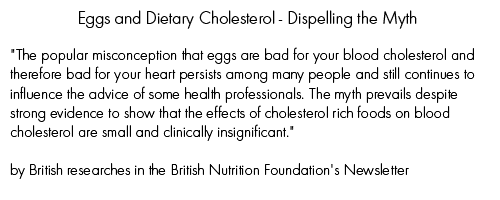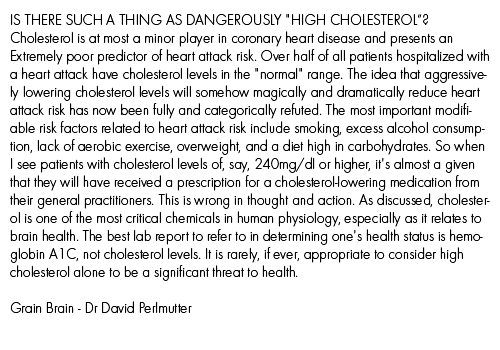The problem isn’t the cholesterol – in fact you do need cholesterol to live. This waxy, soft and fat-like substance is present in your blood as well as every cell in your body. Cholesterol helps to produce hormones (testosterone, estrogen and adrenaline), cell membranes, vitamin D (without it there will be no vitamin D) as well as bile acids which help your body to digest fat.
The cholesterol we ingest is typically a minor source compared to the amount our body produces. Your liver produces about 75%, or more of the cholesterol in your body, every cell in your body can produce cholesterol – so if cholesterol is so bad then why would your own body produce it?
We know now through scientific evidence that cholesterol is not linked to heart disease… But what is the problem with cholesterol then?
Basically it’s the WRONG kind and the Oxidation of cholesterol that is the issue.
Cholesterol is insoluble in your blood, which means that it can never be present in your blood as just cholesterol. Let’s say that cholesterol is the cargo and it needs a ship to transport it in your blood. The ship would be lipoprotein.
Lipoproteins also transport triglycerides (fats), phospholipids and fat-soluble vitamins.
There are different types of lipoproteins, however the most significant are:
LDL (Low Density Lipoprotein)
HDL (High Density Lipoprotein)
Now a doctor will tell you that the HDL is the “good” cholesterol and the LDL is the “bad” cholesterol – However the cholesterol in both is the same; the difference is in the lipoproteins…
You get two types of LDL – sdLDL small dense particles (pattern B) and large LDL (pattern A).
sdLDL
Research suggests that these small particles are the contributors to heart disease and not the large LDL particles. Fat free diets (high intake of refined carbohydrates) will increase your sdLDL and will change your LDL pattern to sdLDL.”
Now, if you reduce your saturated fat intake you are only lowering the pattern A particles. As we have seen the pattern B particles are the ones playing a role in heart disease and here is the crux of the matter: The pattern B particles are controlled by your intake of carbohydrates.
Atherogenic dyslipidemia: cardiovascular risk and dietary intervention.
The sdLDL are a problem, because if they let’s say get called in to come and repair damaged arteries, they may become stuck in the wall and they get damaged because of oxidation. This leads to arterial plaque because an inflammatory reaction is caused.
It is a complicated scenario, however what it boils down to is this – Cholesterol is not bad, and eating saturated fat will not give you heart problems. Eating bad food will cause the formation of sdLDL particles.
I’ll leave you with the words of Dr David Perlmutter:




Leave A Response